Key takeaways:
- Continuity in filmmaking is essential for audience immersion, as even minor errors can disrupt the narrative experience.
- Effective techniques for maintaining continuity include detailed scripts, visual references, and fostering communication among crew members.
- Common pitfalls in continuity include inconsistencies with props, character placement, and lighting changes, which can significantly impact storytelling.
- Utilizing shot lists, photo documentation, and a buddy system can enhance continuity efforts and improve overall production quality.
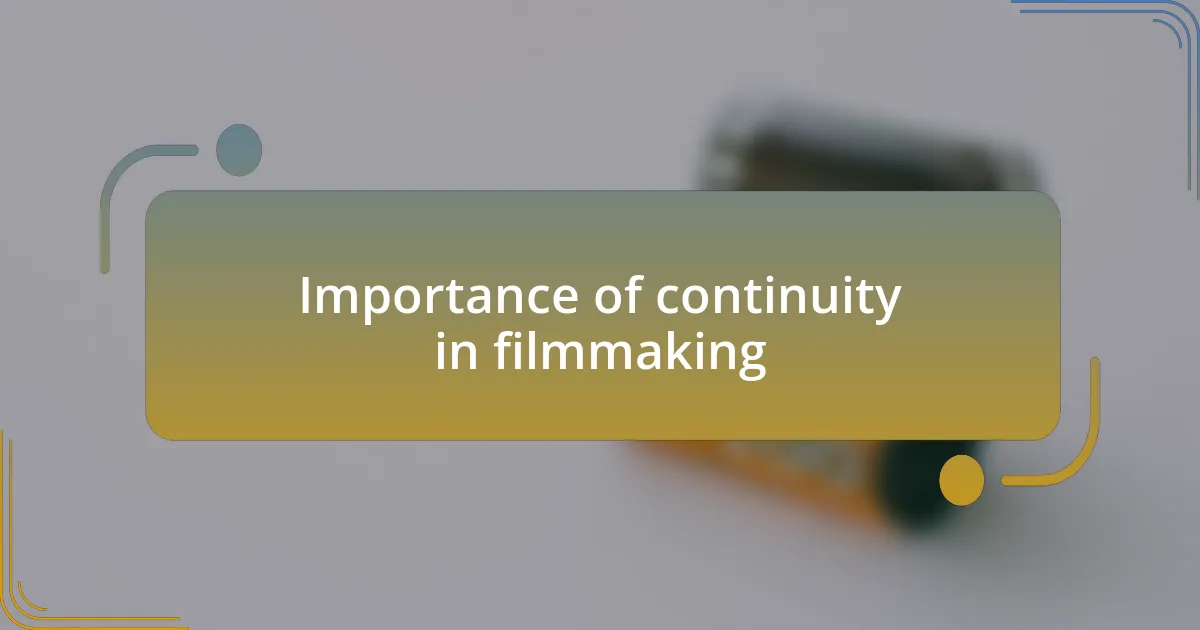
Importance of continuity in filmmaking
When I think about continuity in filmmaking, I can’t help but recall my early days on set, struggling to keep track of details from one shot to another. Those small elements—like a character’s hairstyle or the placement of a coffee cup—might seem trivial at first glance, but they can make or break the audience’s immersion in the story. Isn’t it fascinating how a single continuity error can pull viewers out of the narrative, reminding them that they’re just watching a film instead of living within its world?
Continuity serves as the invisible thread that stitches scenes together, creating a seamless experience for the audience. Just last week, I rewatched a classic film and found myself captivated by how every detail, from wardrobe choices to background actions, aligned perfectly. I often find myself wondering: how did they manage to keep it so cohesive? It’s a testament to the meticulous planning and teamwork behind the scenes, reinforcing the idea that every member of the crew plays a crucial role in maintaining that essential flow.
In my experience, the importance of continuity goes beyond technical execution; it taps into the emotional journey of the characters. When everything aligns, it feels as if we’re stepping into a genuine experience, one that resonates with our own emotions. Have you ever watched a film where something felt off? That disconnect can linger long after the credits roll, reminding us just how vital continuity is in crafting a compelling story.
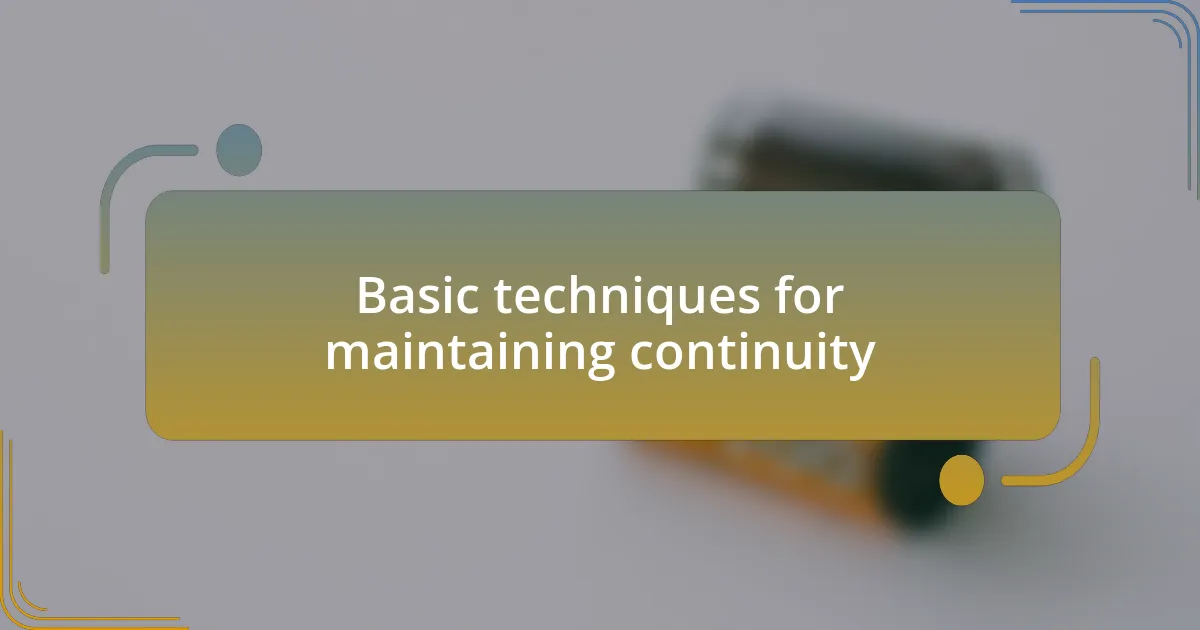
Basic techniques for maintaining continuity
One basic technique for maintaining continuity is creating a detailed script and shot list. I remember working on a short film where our script supervisor meticulously noted every scene’s specifics, including props and character movements. This attention to detail allowed us to shoot in different locations without losing track of elements like a character’s expression or the time of day. Have you ever tried to piece together a puzzle without the final image? That’s what continuity errors can feel like for the audience.
Another effective method involves using visual references, such as storyboards or photographs, during production. In one project, I took photos of set arrangements and costumes after each scene. These images proved invaluable during editing when we had to reshoot a few sequences. Just think about how your favorite films might have extra layers of planning like this—doesn’t that add a new dimension to how you view those scenes?
Finally, encouraging open communication among the crew is crucial. I recall a moment when a fellow crew member noticed a minor inconsistency in a character’s outfit that I had completely overlooked. That collaborative spirit not only helps identify potential problems but also fosters a sense of ownership among the team. Wouldn’t you agree that embracing teamwork is just as vital as the technical skills we develop in filmmaking?
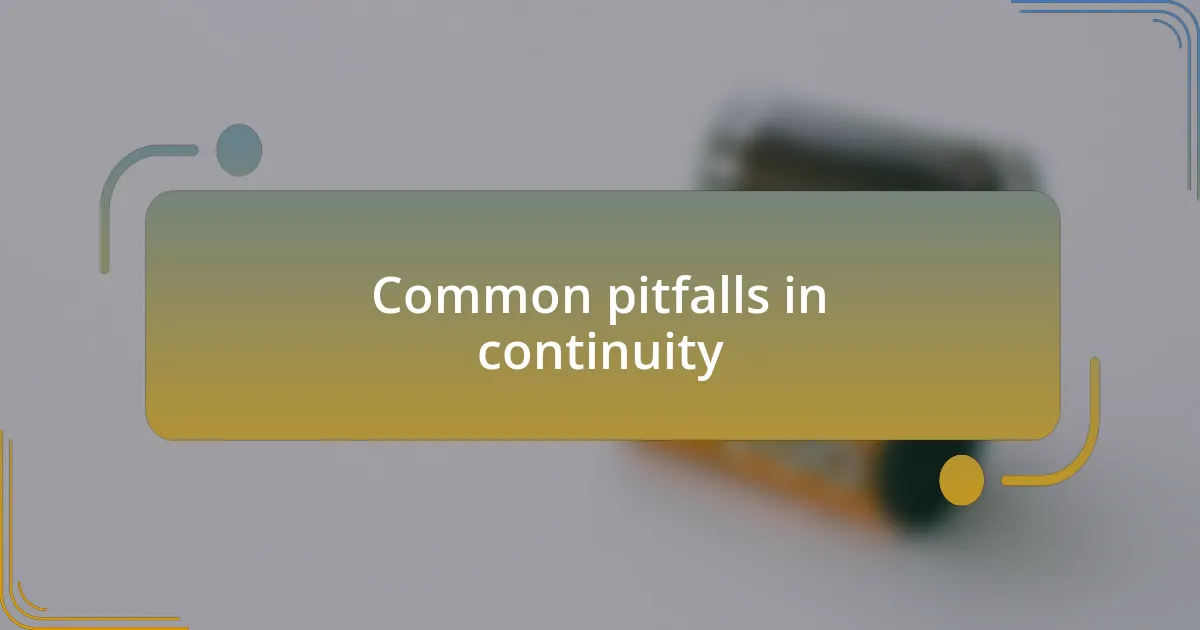
Common pitfalls in continuity
It’s easy to overlook things when you’re deeply immersed in production, and one of the most common pitfalls in continuity is inconsistencies with props. I remember a scene where we had a coffee cup that kept changing colors between takes because different crew members grabbed what they thought was the same cup. It was subtle, but in the final cut, it distracted from the narrative. Have you ever noticed a small detail that pulled you out of a film? It’s a reminder of how even minor elements can disrupt the audience’s immersion.
Another frequent mistake I’ve encountered revolves around character placement and performance. During one shoot, an actor repositioned themselves slightly between takes without anyone realizing it. This seemingly minor shift caused a jarring continuity error that was glaring when edited together. I can’t stress enough the importance of monitoring not just what a character is doing, but where they are doing it. Have you ever felt disoriented by a character’s sudden change in proximity? That shift can break the spell of storytelling.
Finally, lighting inconsistency can be a silent killer of continuity. I once worked on a project where the sun’s position changed dramatically as we filmed throughout the day. Before realizing the issue, we had shots that ranged from bright afternoon light to dusky evening shadows within the same scene. It made me appreciate how vital it is to track not only what we want to capture but also how the environment evolves. Have you experienced the jarring effect of disjointed lighting moments in a film? Those visuals can fundamentally influence the emotional tone of the story.
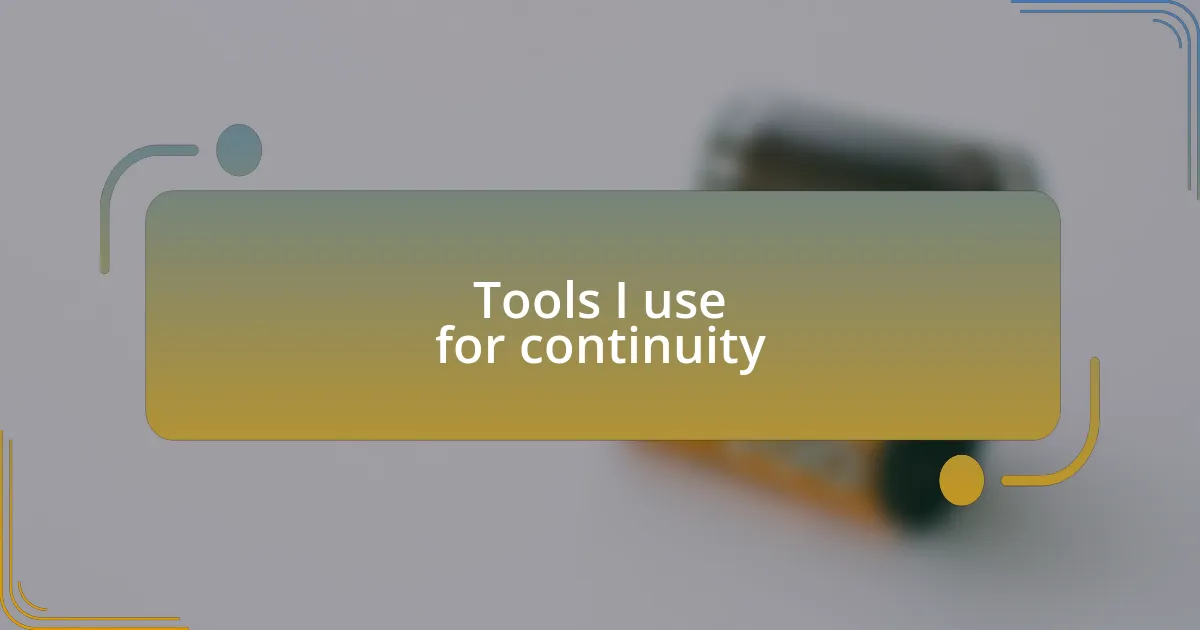
Tools I use for continuity
When it comes to ensuring continuity, I rely heavily on shot lists and detailed annotations. I’ve found that having a comprehensive list of every shot, paired with notes about props, costumes, and specific character actions, creates a roadmap for the day. Just last week, I was able to avoid a major inconsistency by referencing my notes, which reminded me to check the direction an actor was facing before each take. How often do you think a well-structured list can save a production from chaos?
Another essential tool in my continuity arsenal is the use of photo documentation. Capturing images of each setup helps me visualize and remember the details that can easily slip through the cracks. A few months ago, I encountered a situation where a costume change nearly went unnoticed due to lighting shifts. However, revisiting the photos from earlier in the day allowed me to spot the differences and correct them before editing. Have you ever tried using photos to track complex scenes?
Lastly, I swear by the buddy system for continuity checks. I often designate someone on set to keep an eye on specific details while I’m focused on directing. During one production, having a dedicated continuity person made a noticeable difference, particularly with the props shifting around. This collaborative effort not only eased my workload but also fostered an environment of accountability among the crew. Isn’t it interesting how a simple partnership can enhance the overall quality of a project?
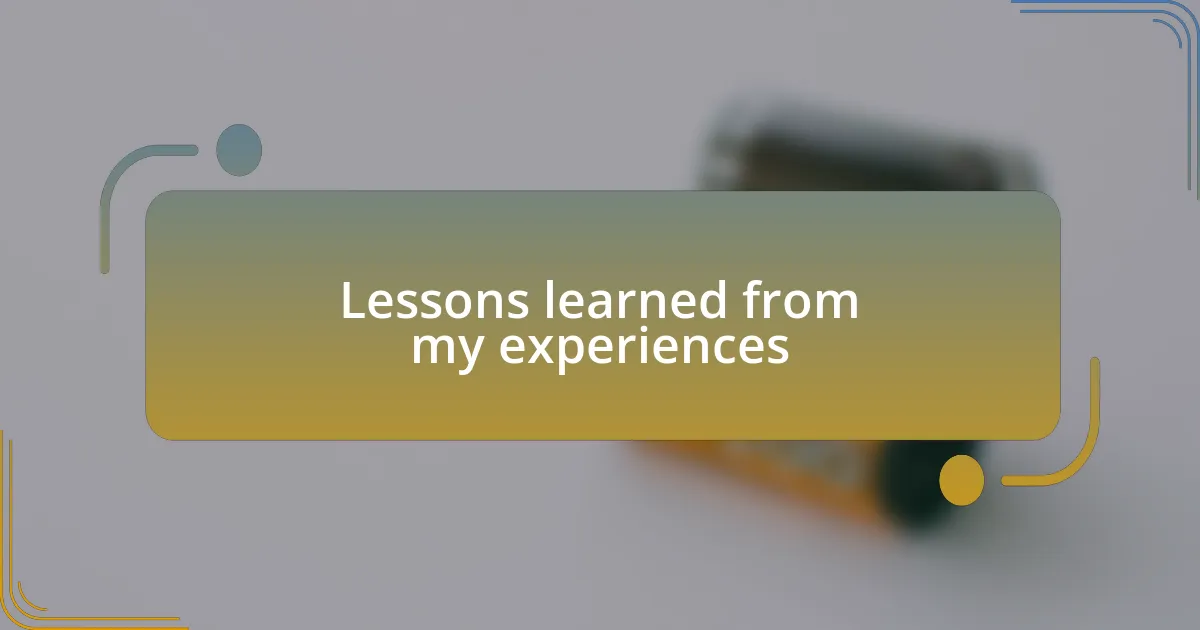
Lessons learned from my experiences
Reflecting on my experiences, I realize how crucial adaptability is in addressing continuity issues. There was a project where an unexpected location change threw off our carefully laid plans, and I learned to embrace flexibility. Instead of panicking, I started collaborating more closely with my team, checking in regularly to reassess what details needed immediate attention. Have you ever had to pivot on set? It can be both daunting and liberating.
One standout moment taught me the importance of clear communication. During a tense night shoot, conflicting notes on character actions nearly derailed a critical scene. I stepped in to facilitate a quick meeting, pulling everyone together to refresh our focus. That night, I learned how vital it is to keep everyone on the same page. I now prioritize real-time updates among the crew, as it fosters a sense of unity and clarity. Does a shared understanding ever save your day on set?
I’ve also become more attuned to the emotional impact continuity can have on a narrative. I vividly recall a heartfelt scene where slight inconsistencies in the actor’s expressions detracted from the intended emotion. After that experience, I started paying closer attention to the subtleties of performance continuity. By prioritizing these emotional elements, I’ve found that it not only strengthens the story but also deepens audience engagement. How do you ensure that the emotional threads of your film remain intact?